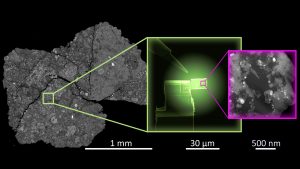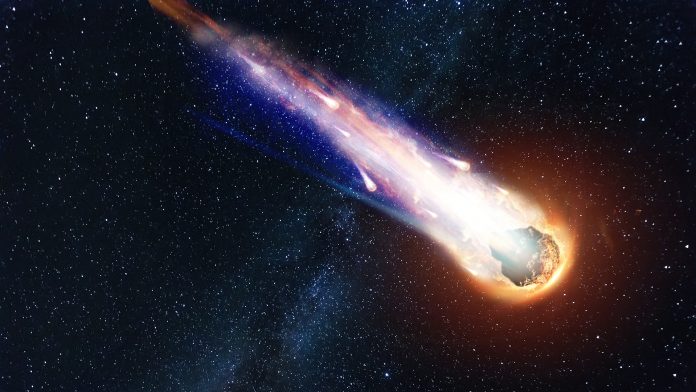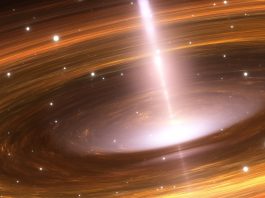Scientists have used powerful microscopes to discover chemical and molecular fingerprints of the early Solar System inside the recently recovered Winchcombe meteorite.
Meteorites like Winchcombe represent the building blocks of our Solar System, providing key insights into the ingredients from which the planets, including Earth, are formed.
A rare group of meteorites, called carbonaceous meteorites, are rich in chemical species such as carbon and nitrogen and likely played a critical role in delivering water and organic molecules to the early Earth.
The findings, ‘High-spatial resolution functional chemistry of nitrogen compounds in the observed UK meteorite fall Winchcombe,’ are detailed in a paper in Nature Communications.
What can the Winchcombe meteorite tell us about the early Solar System?
Winchcombe is a carbonaceous meteorite that was widely observed to fall in the UK in February 2021, with the first samples collected only around 12 hours after landing.
Therefore, it offers scientists an opportunity to investigate the composition of organic matter in the early Solar System without the severe terrestrial alteration effects that usually compromise investigations of meteorites.
The researchers have provided the first in-depth analysis of organic matter within the Winchcombe meteorite at the nanoscale.
They were able to uniquely correlate synchrotron-radiation data with complementary ultra-high resolution spectroscopic information about the nature of the functional chemical groups present in the organic matter, using one of the most powerful electron microscopes in the world at the SuperSTEM Facility in Daresbury, Cheshire.
This allowed the striking in-situ detection of nitrogen-bearing biorelevant molecules, including amino acids and nucleobases, that are fundamental components of the larger, complex proteins used in biology.
The research shows that Winchcombe still contains pristine extraterrestrial organic molecules that might have been crucial to the advent of life on early Earth.
Advancing electron microscopy
Quentin Ramasse, Professor of Advanced Electron Microscopy at Leeds’ School of Chemical and Process Engineering, said: “This work demonstrates that recent electron microscopy instrumentation advances, including monochromated high-energy resolution electron sources and highly sensitive new detector designs, enable the analysis of extraterrestrial organic matter with unprecedented resolution and efficiency.
“It opens up new avenues of research on these materials in the future using compact and easily accessible electron microscopy instrumentation in addition to synchrotron radiation.”
Christian Vollmer, Senior Researcher at the University of Münster, added: “The identification of bio-relevant molecules such as amino acids and nucleobases in Winchcombe without using any chemical extraction methods is hugely exciting, especially as we were able to highlight spatial variations in their local concentration at the nanoscale.
“This suggests that our approach makes it possible to map functional chemistry in meteorites, even though the sizes of the organic domains are extremely small and the abundances of the chemical compounds very low.”
Further examination of the meteorite
The researchers used the SuperSTEM Laboratory, the UK National Research Facility for Advanced Electron Microscopy, supported by the Engineering and Physical Research Council (EPSRC).

The facility houses some of the most advanced facilities in the world for investigating the atomic structure of matter and is operated with the support of an academic consortium led by the University of Leeds.
An extremely thin slice of the Winchcombe meteorite, targeting a region of interest rich in carbon-containing chemicals, can be very precisely extracted for further examination, either under an X-ray beam (at Diamond Light Source) or in the electron microscope at SuperSTEM.
Dr Ashley King, Research Fellow at the Natural History Museum, where the Winchcombe meteorite is curated, concluded: “Our observations demonstrate that Winchcombe represents an important addition to the collection of carbonaceous meteorites, with its pristine composition enabling new breakthroughs in our understanding of organic molecules in the early Solar System.”









